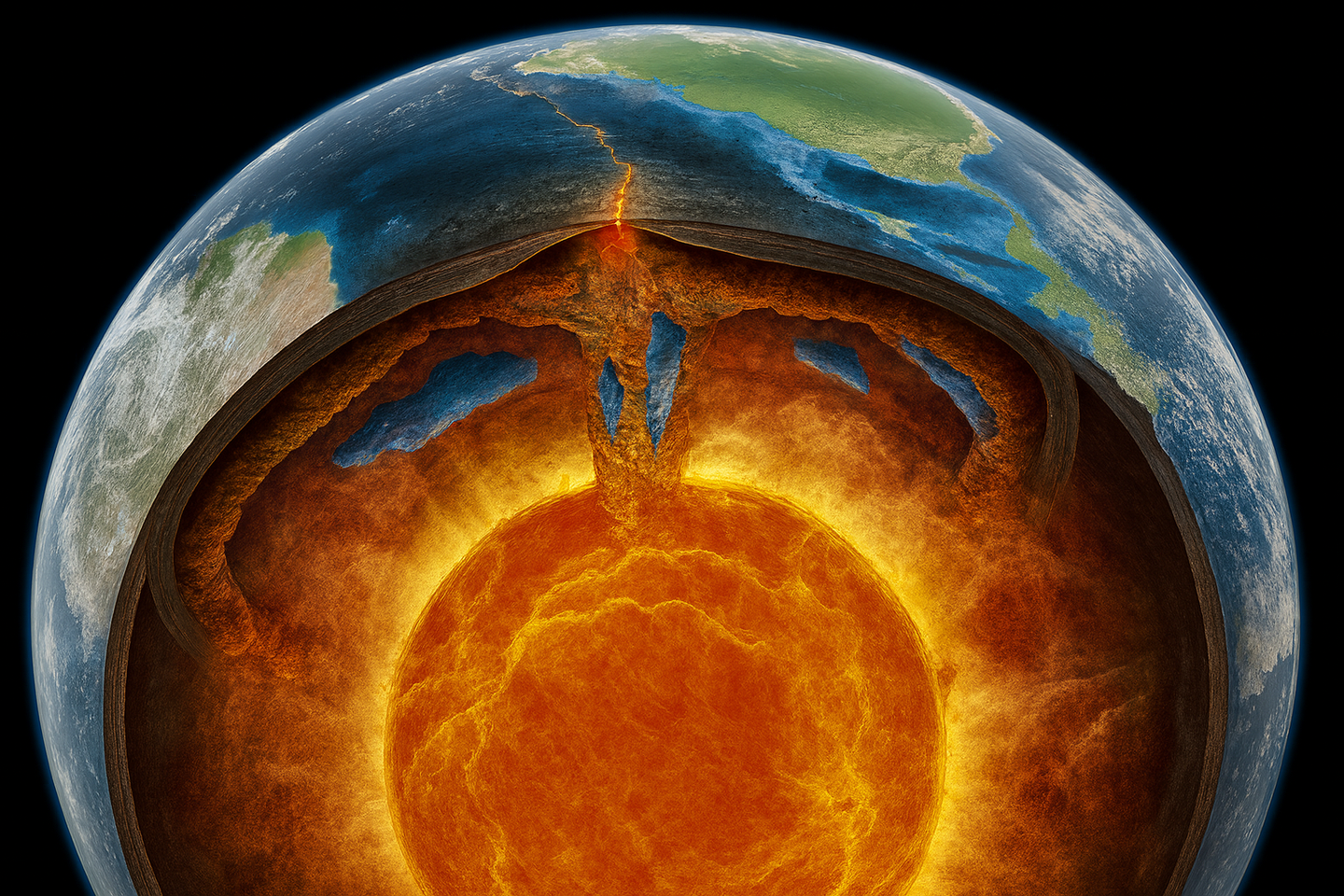Phosphorus from space could help explain the origins of life on Earth
Phosphorus molecules made in icy lab conditions may hold the key to understanding how life began on Earth—and where it could begin again.

Scientists discover how phosphorus molecules form in space, helping trace the origin of life on Earth. (CREDIT:
Becoming Minimalist)
All around the Universe, clouds of gas and dust swirl between stars, hiding tiny, reactive molecules that could hold answers to some of life’s biggest questions. Among them are strange compounds containing phosphorus—an element crucial to life on Earth, but rare in space. While nitrogen-based molecules, like hydrogen cyanide, are found everywhere from comets to gas clouds, phosphorus-based ones are much harder to detect.
That hasn’t stopped researchers from looking. In fact, one group in Warsaw, Poland, is leading the charge to find out how phosphorus could have traveled from space to Earth—and eventually become part of our DNA, cell membranes, and energy systems.
Phosphorus appears in biological molecules like nucleotides, phospholipids, and nucleic acids. But it’s not easy to trace its journey from the far reaches of space. Scientists have only found seven phosphorus-bearing compounds in the interstellar medium (ISM), while more than a hundred nitrogen-bearing ones have been discovered. This is partly because phosphorus is much less abundant in space—about 200 times less than nitrogen in our part of the galaxy.
Still, Earth is relatively rich in phosphorus. So where did it come from, and how did it get here?
To study these elusive phosphorus compounds, scientists often turn to experiments that simulate space-like conditions. One powerful method uses something called matrix isolation. Published in the journal, Physical Chemistry Chemical Physics, this technique involves freezing a molecule in solid argon gas at extremely low temperatures—about 10 Kelvin, which is -441°F. This creates a safe environment where unstable or short-lived molecules can be trapped, stabilized, and studied before they break apart.
A team from the Institute of Physical Chemistry of the Polish Academy of Sciences, working with researchers from France, used this technique to study a rare phosphorus-containing molecule called phosphabutyne (CH₃CH₂CP). When exposed to ultraviolet light, phosphabutyne breaks down and rearranges into other, even stranger molecules. Two of the main products are phosphabutadiyne (HC₃P) and vinylphosphaethyne (CH₂CHCP), which are close cousins of well-known nitrogen-based molecules found in space.
Related Stories
To detect and identify these new compounds, scientists used infrared light to measure how the molecules vibrate. Every molecule has a unique set of vibrations, like a fingerprint, and these can be used to figure out its structure. Quantum chemistry helped confirm which frequencies matched which molecules.
According to Professor Robert Kołos, who leads the team, “We were after the completely unexplored infrared spectroscopy of HC₃P and CH₂CHCP. Thus far, only the microwave spectra of these two have been reported.” Dr. Arun-Libertsen Lawzer added, “In the case of HC₃P, we measured as many as five vibrational frequencies, which should be beneficial for future remote detections.”
These findings could have a big impact. As telescopes and sensors become more sensitive, scientists can now detect even tiny amounts of molecules in space. Dr. Thomas Custer of the team believes HC₃P might be a good candidate for detection with the James Webb Space Telescope. If it is found, it could help fill in the missing links between phosphorus in deep space and its arrival on planets like Earth.
The ultraviolet light used in the lab also mimics the intense radiation found in the ISM, which means the chemical reactions observed in the experiment might be similar to those happening in cold, dark gas clouds between stars. This helps scientists understand how simple molecules might form, break apart, and turn into more complex ones—the first steps toward creating the building blocks of life.
The team also observed the creation of other compounds, like ethynylphosphinidene (HCCP) and phoshaethyne (HCP). These are small and reactive, but important for modeling how molecules change in space. In addition, several isomers of phosphabutyne were formed—molecules that have the same atoms but arranged in different ways.
These findings don’t just help identify possible space molecules; they also offer clues about how phosphorus might survive, move, and evolve under space-like conditions. This makes it easier for astronomers to look for signs of these molecules in space and trace the chemical steps that could lead to life.
The study also touches on other exotic compounds like phosphaallenes and phosphaalkynes. These are reactive molecules with carbon-phosphorus triple or double bonds. They’re usually hard to study because they tend to break apart or clump together unless stabilized with bulky side groups.
In this case, methyl-phosphaallenes—molecules with a phosphorus atom bonded to a three-carbon chain—were formed during the photolysis of phosphabutyne. These molecules, called 2a and 2b by the researchers, result from hydrogen and methyl group rearrangements. Their creation mirrors that of earlier experiments involving phosphapropyne.
The IR bands of 2a and 2b matched predicted values closely. The researchers could even track how these molecules appeared and changed over time by looking at how their signals grew or faded. Interestingly, one of them, 2a, turned out to be more stable than 2b, which seems to act as a stepping stone in further transformations.
This kind of detailed tracking helps researchers build reaction pathways—chemical roadmaps showing how one molecule transforms into another under light or heat. These maps are essential for understanding the complex chemistry of space and how tiny changes can lead to vastly different outcomes.
For decades, astrochemists have been trying to figure out where life’s building blocks come from. Much of that effort involves understanding how molecules behave in the extreme environments of space. With tools like cryogenic isolation and infrared spectroscopy, scientists can now study these fragile, fast-reacting molecules on Earth and predict where to find them in the sky.
While nitrogen-based molecules dominate the interstellar medium, phosphorus is starting to gain attention. The research on HC₃P and CH₂CHCP opens new doors. These molecules might be rare, but their roles could be vital—either in prebiotic chemistry or as markers of conditions where life could eventually develop.
One thing is clear: the molecules floating in deep space aren’t just chemical leftovers. They are part of a much larger cycle, moving from star systems to comets, and perhaps to planets like ours. By studying them closely, you can begin to see how the same basic elements might come together in new and surprising ways—ways that may have made life possible here on Earth.
And while the work is far from over, each new discovery brings us closer to understanding the deep connections between chemistry and the cosmos.
Note: The article above provided above by The Brighter Side of News.
Like these kind of feel good stories? Get The Brighter Side of News' newsletter.



